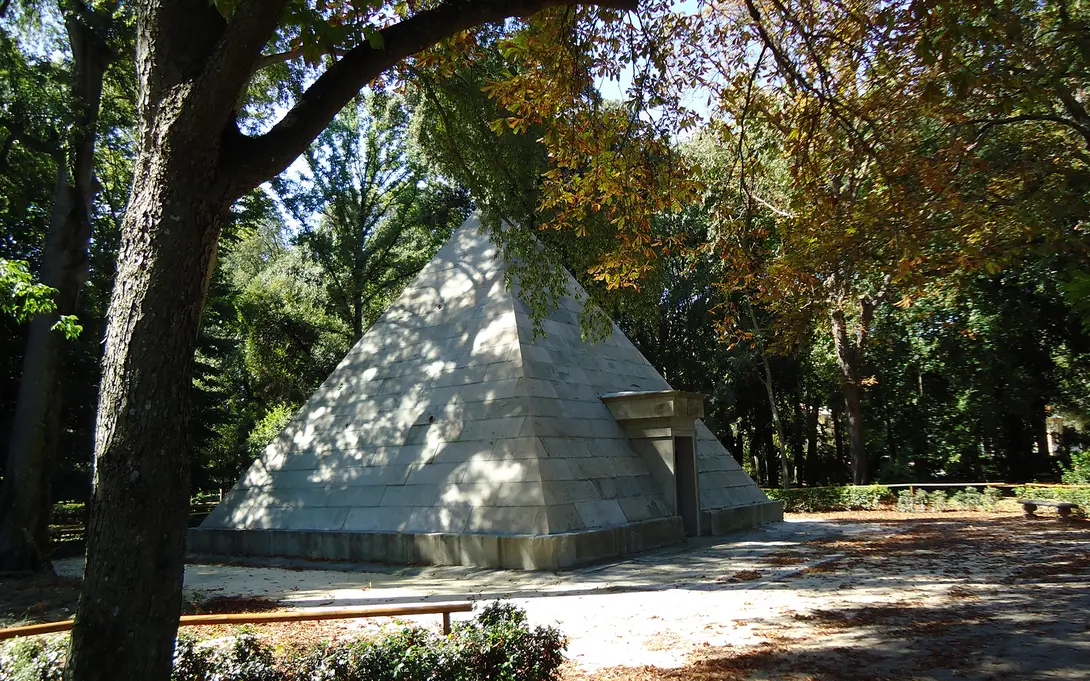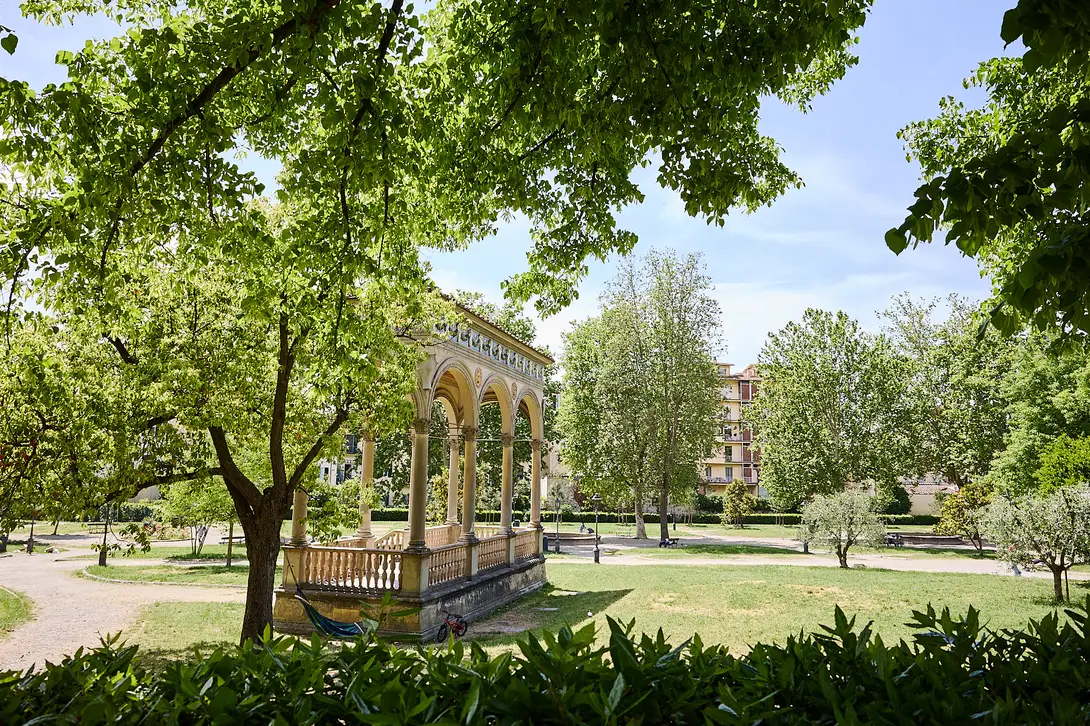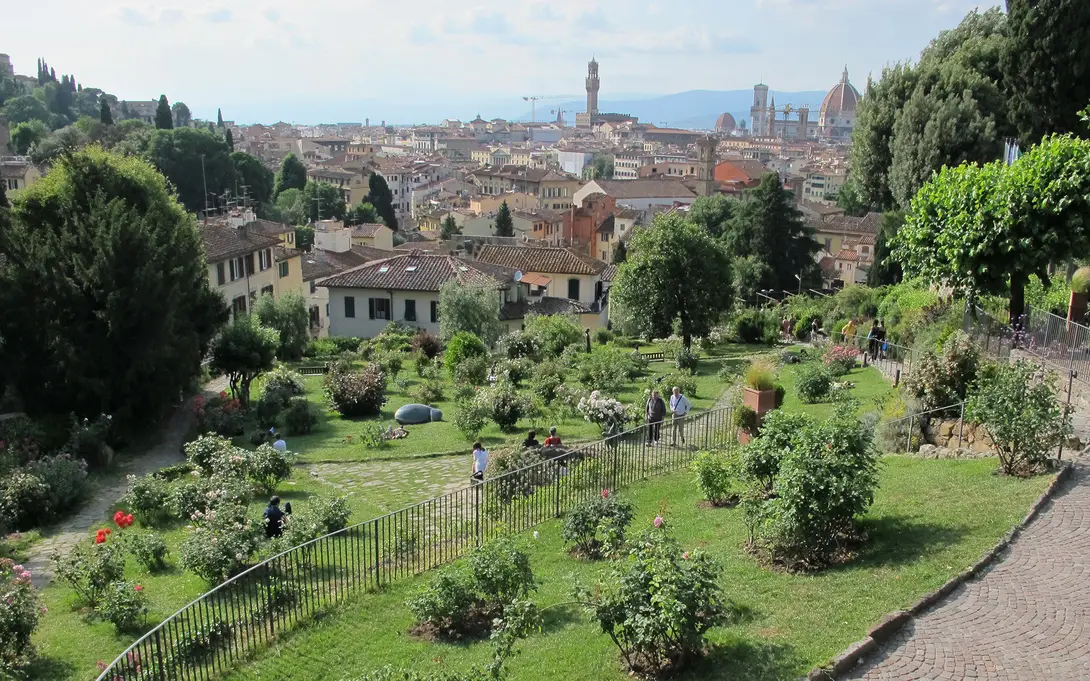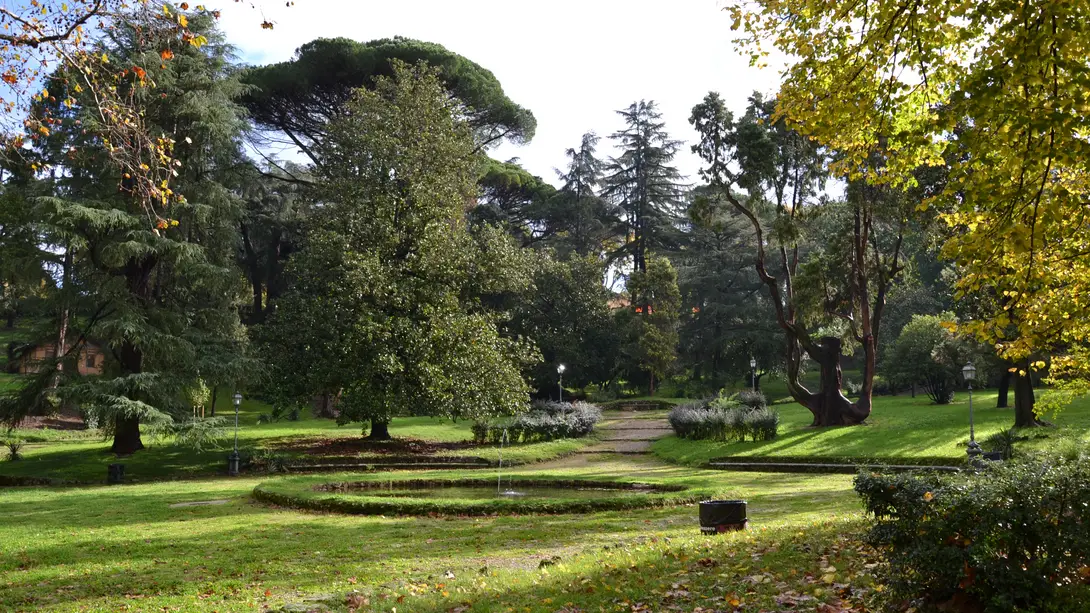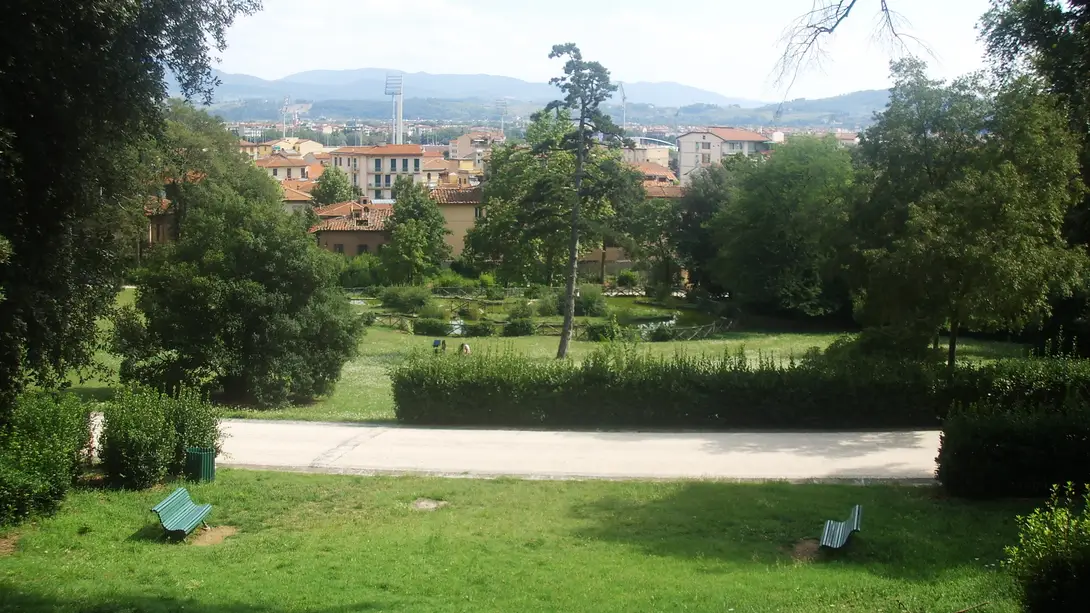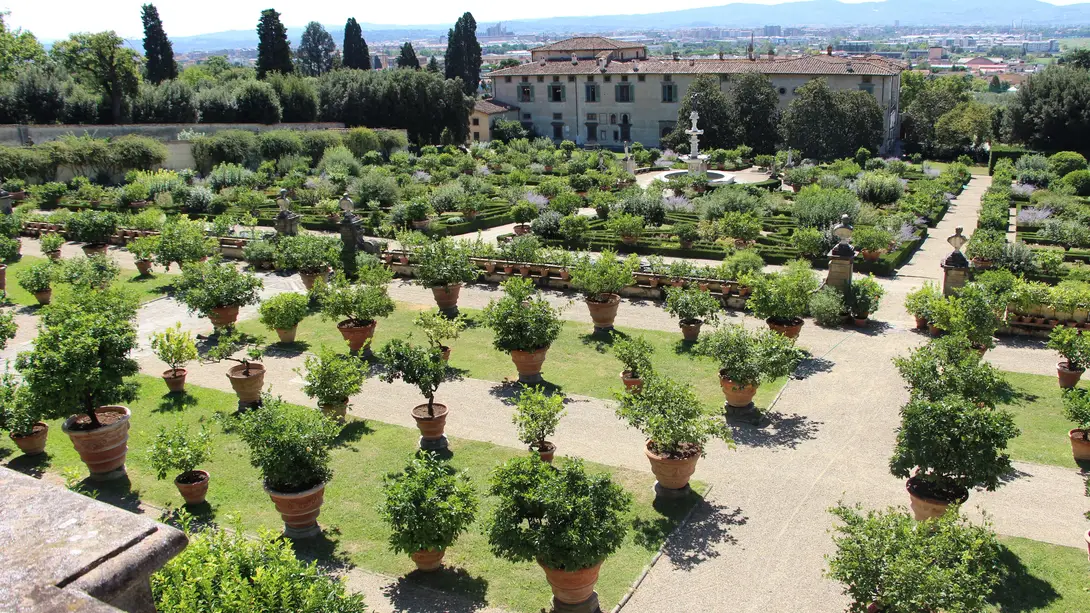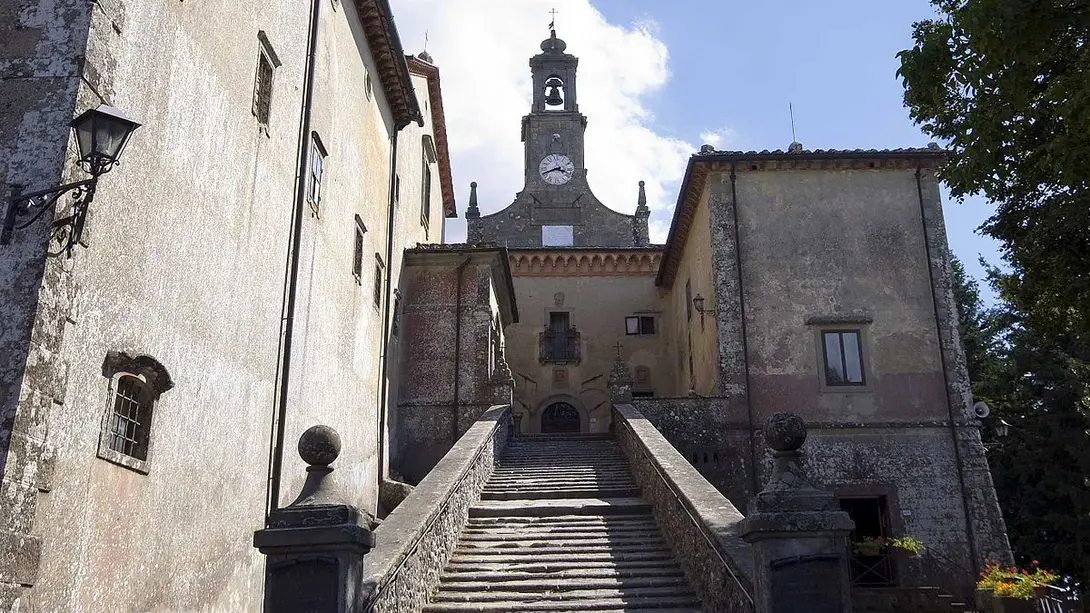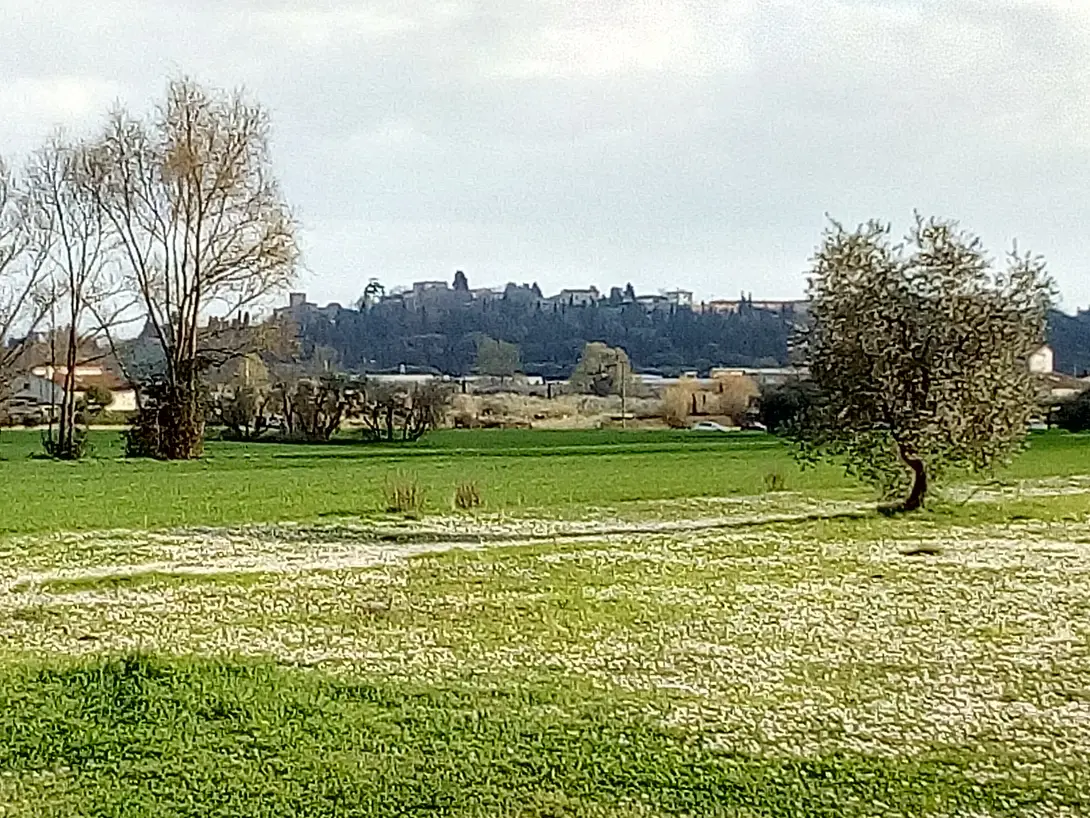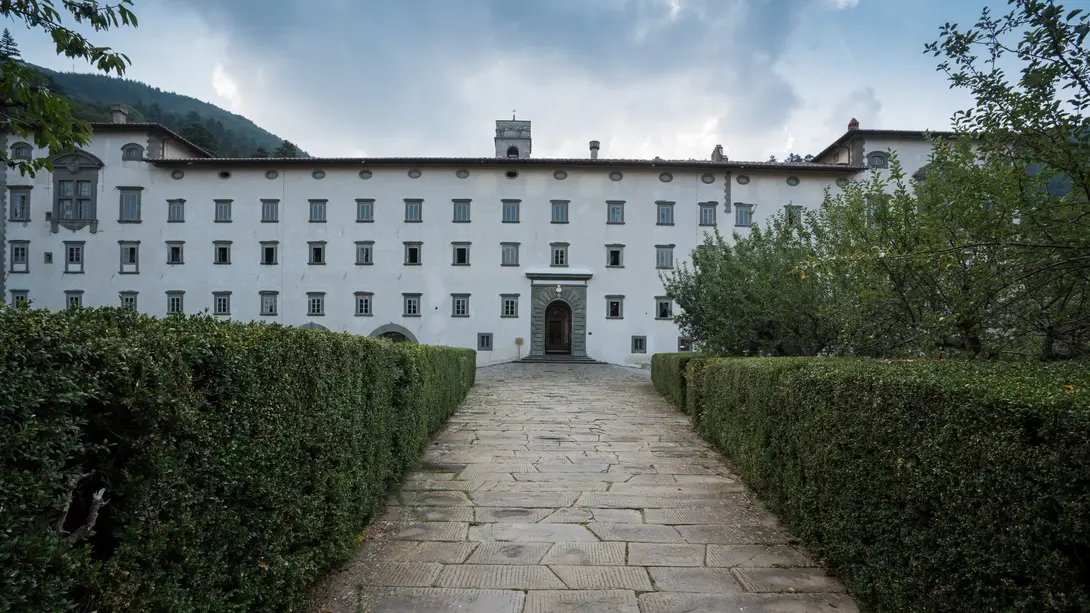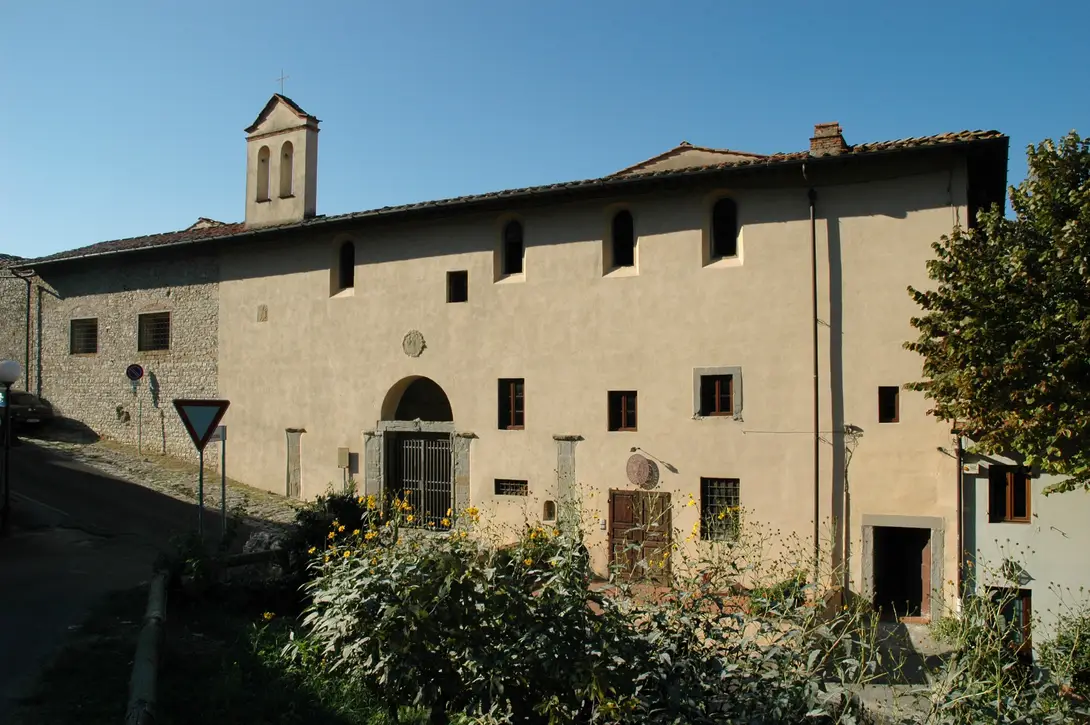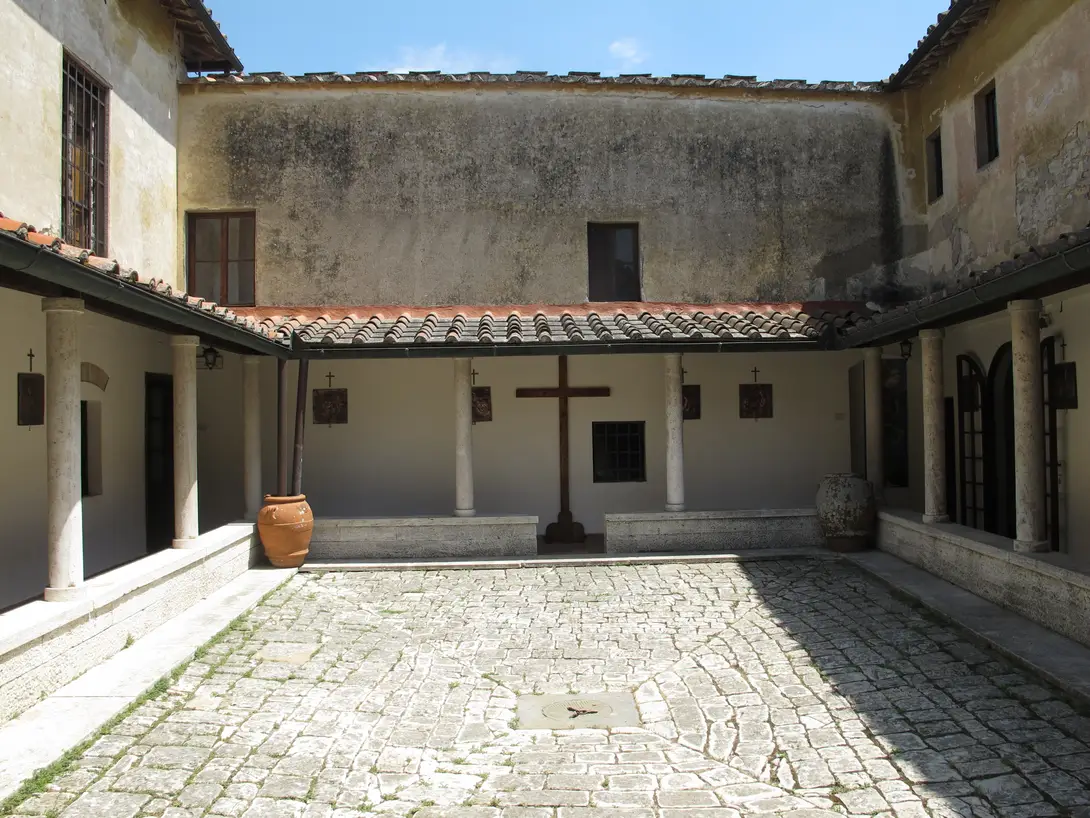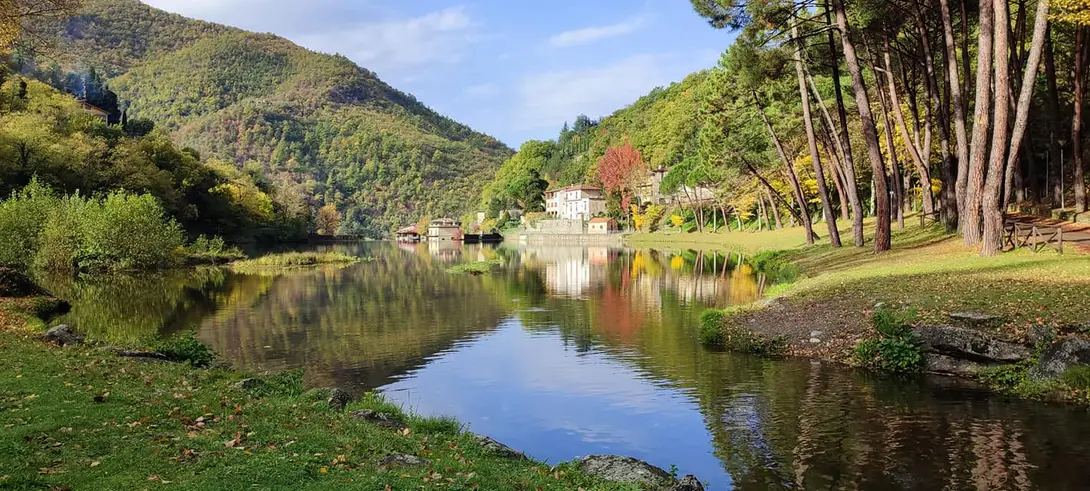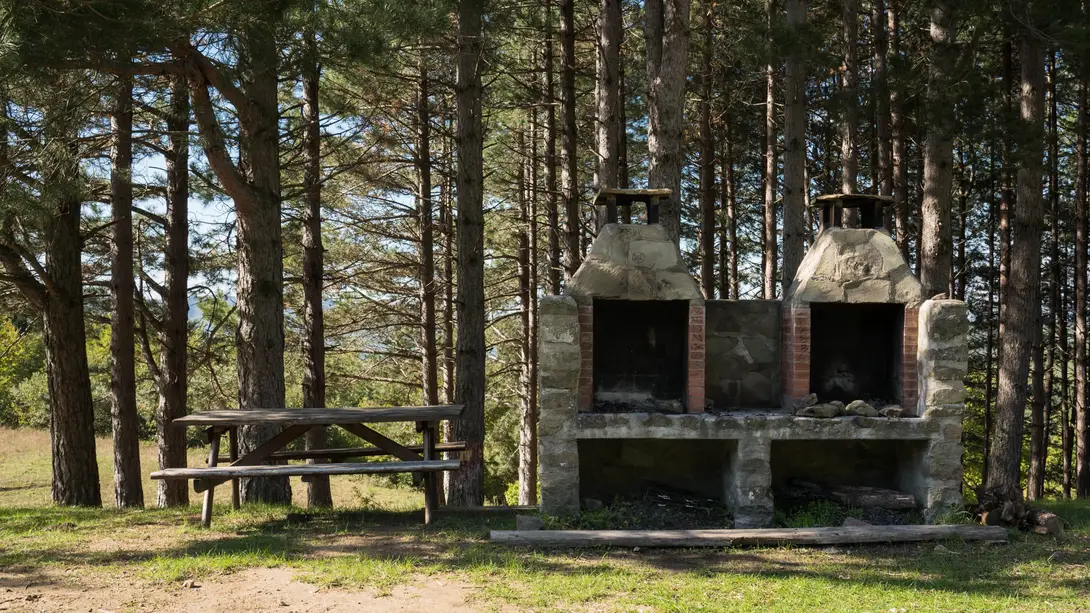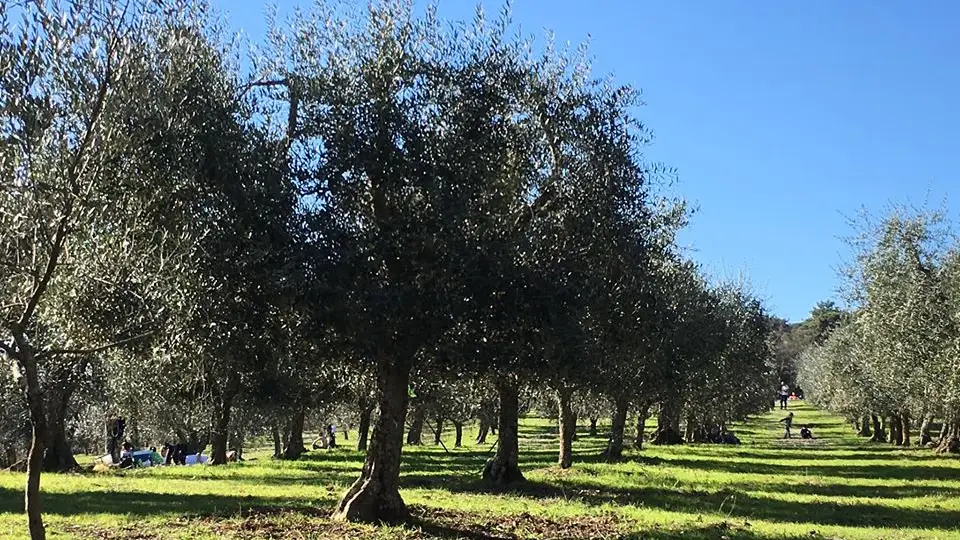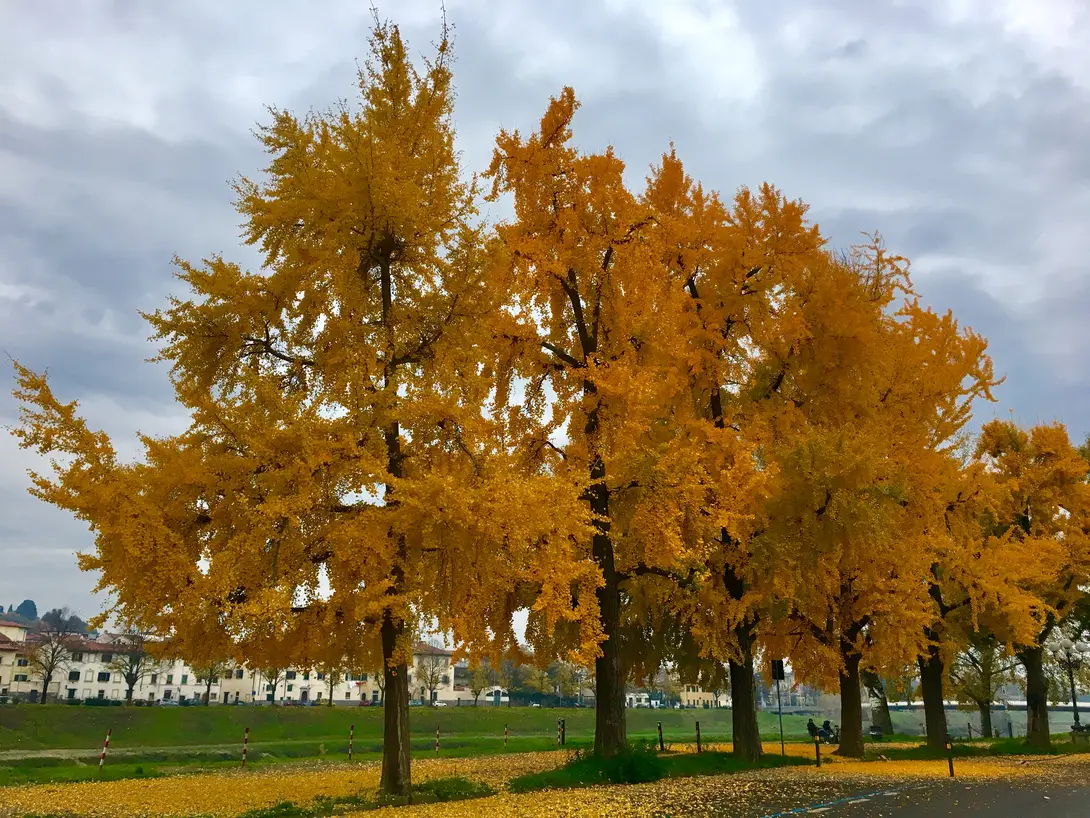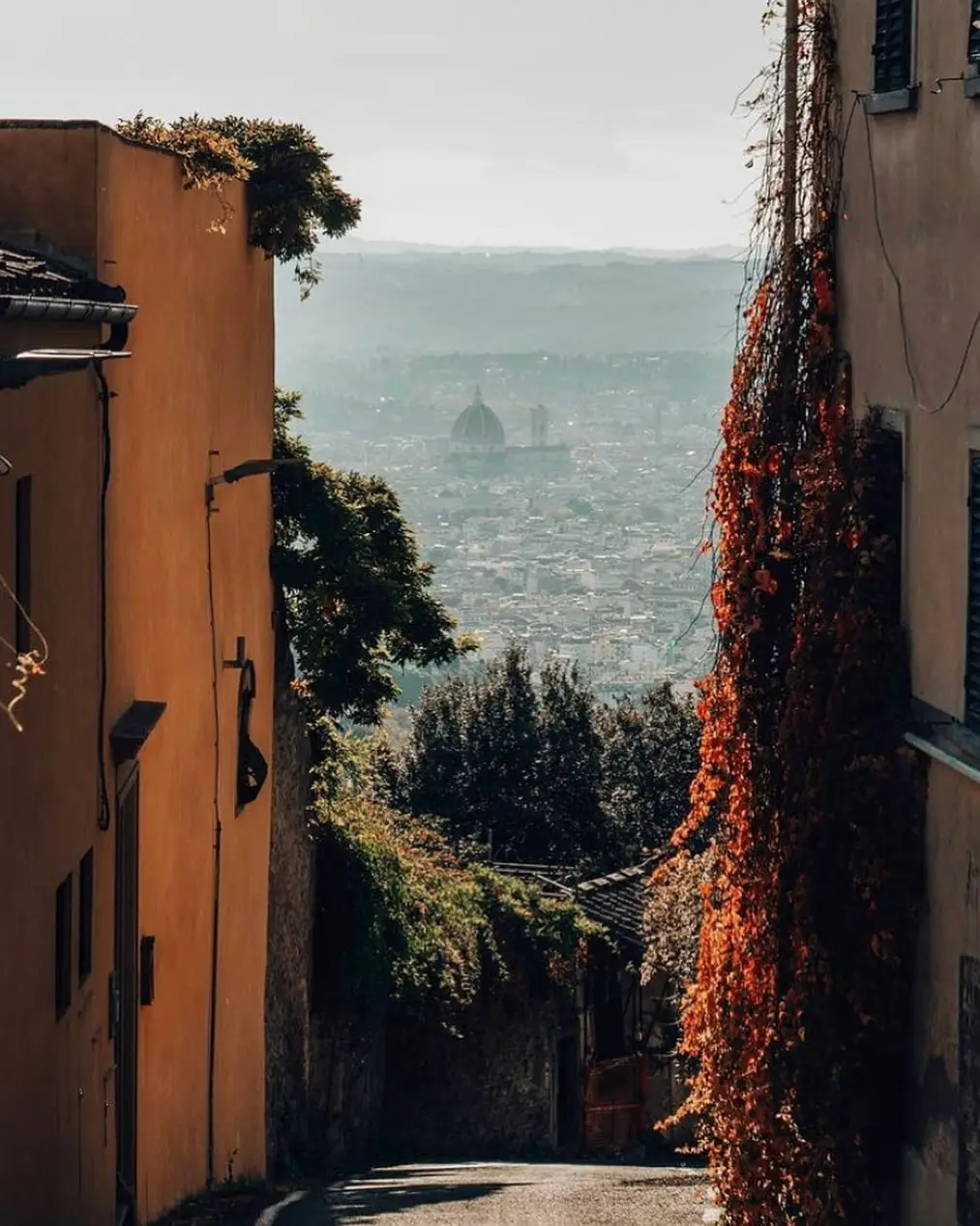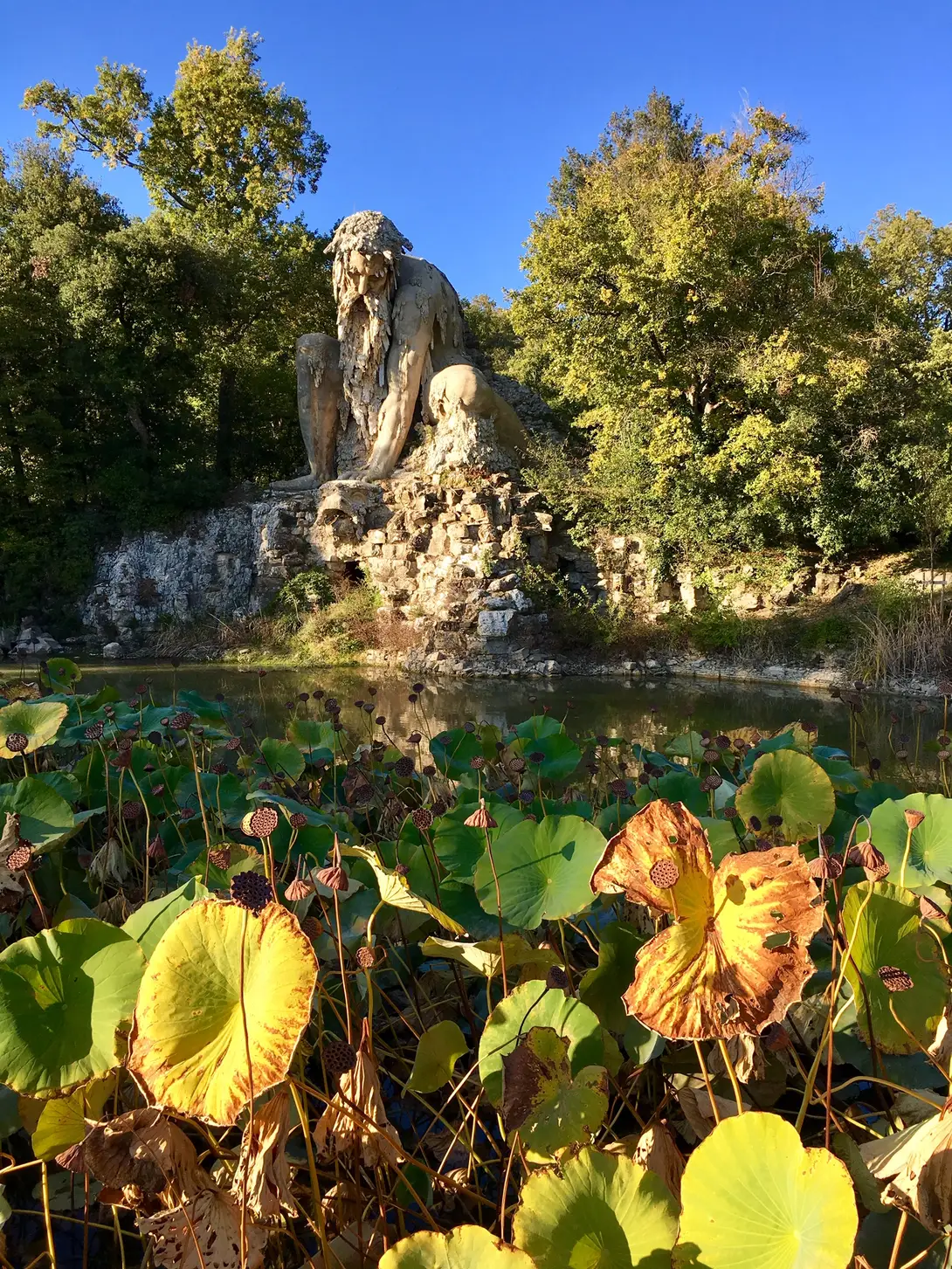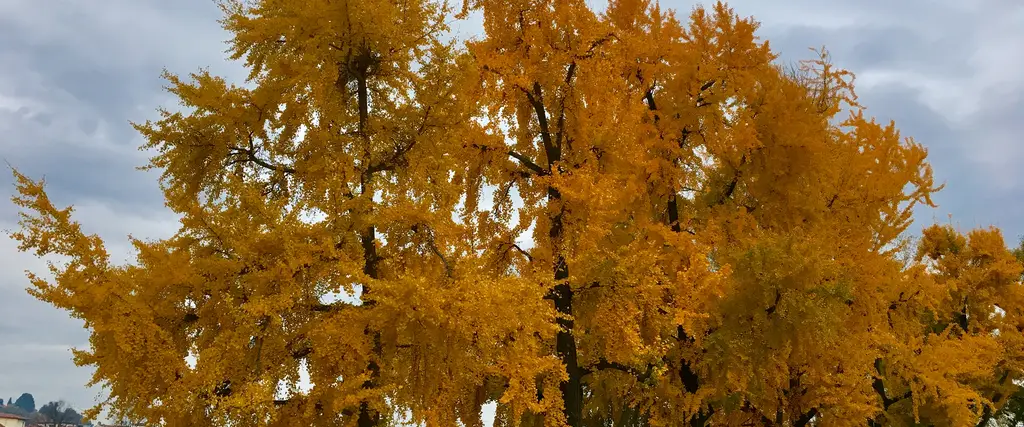
Unmissable places to admire the foliage in and around Florence
It's autumn: that time of year when the tree tops light up with all the warm shades of red, yellow and orange: it's foliage time.
Here is an itinerary with some suggestions for enjoying the spectacle while staying in Florence, or leaving the city in search of the most colourful woods in the Florentine territory.
In Florence
Let's start with Florence, certainly the Cascine Park, the largest green space in the city cannot disappoint us even on this occasion and already in Piazza Vittorio Veneto we find the prima donnas of foliage: the resplendent Ginko biloba, with their golden yellow leaves.
Other places where one can admire the magic of autumn colours are: the Giardino dell'Orticoltura, the Giardino delle Rose, Bobolino, the Parco di Villa il Ventaglio, and the Giardino della Villa di Castello.
In Pratolino
Leaving the city, an absolute must is the Parco Mediceo di Pratolino, where Giambologna's majestic Apennine is surrounded by the thousands of shades of leaves of beech, oak, plane and lime trees.
Around Florence
The Monte Morello area will also fill our eyes with autumn colours, as will the beech forests near Vallombrosa and the woods around MonteSenario, the vineyards around Pontassieve, Rufina, and Figline Valdarno, the paths towards the Convento dell'Incontro or the Spedale del Bigallo in Bagno a Ripoli, the Monte Ceceri area in Fiesole, the Poggio Valicaia Park near Scandicci and the Travalle park in Calenzano.
Finally, after admiring the tree canopies reflected in the waters of the Londa lake, we can venture out in search of the most striking views within the Parco Nazionale delle Foreste Casentinesi, Monte Falterona and Campigna.
Comune di Firenze
The places
Stages
Cascine Park
Le Cascine was once the property of Alessandro and Cosimo I de’ Medici (sixteenth century) who purchased the land, using it as a hunting ground and a place to farm and breed cattle. During the 18th century, thanks to Pietro Leopoldo, the Habsburg-Lorraine Grand Duke of Tuscany, the area became accessible to the public, although only in some occasions (Court Feasts, Ascension day). In the same period (1785) the architect Giuseppe Manetti created important buildings such as the “Palazzina Reale” and the “Ghiacciaia-Piramide”.
Elisa Baciocchi, sister of Napoleon, Grand Duchess of Tuscany transformed definitely the Cascine in a public park (1807-1815), thus giving the city a vast green area. During the second half of the 19th century the architect Giuseppe Poggi planned a huge square (the present Piazza Vittorio Veneto), originally intended to be the entrance area to the park. The “Scuola di guerra aerea” is the last, most important architectural realization; it was created in 1938 by Raffaello Fagnoni.
In this big park, it is possible to have a picnics with children. Furthermore, you can rent bicycles or skates and enjoy summer in Le Pavoniere swimming pool.
Giardino dell'Orticoltura
In 1854 the "Società Toscana d'Orticultura" (Tuscan Society of Horticulture) was constituted. In the second half of the 19th century the garden got larger and Giacomo Roster designed the big tepidarium, inaugurated in 1880. The little loggia "Bondi" by the architect Castellucci was realized in 1911.
The Municipality of Florence bought the garden in 1930 and designated the area as a public garden. In 1990 the "snake" was completed with decorations of different materials following the project of Marco Dezzi Bardeschi.
Inside the garden there is also a playground for children.
Rose Garden
The Rose garden is a green terrace right below Piazzale Michelangelo overlooking the historic centre of the city and enjoying a breath-taking view equal in beauty to that from Forte Belvedere. The Garden has been entirely redesigned better to display the works by Folon. Visitors will be able to admire the unique view of Santa Maria del Fiore and Palazzo Vecchio through the big suitcase of Partir; they will rest next to Folon’s man on the timeless bench of Je me souviens; they will stroke the Chat, the large cat sleeping on the grass among rosebushes.
In the garden there is also a ... corner of Japan! The Japanese garden was donated to the Municipality of Florence by the twin city of Kyoto.
Giardino di Bobolino
Called Bobolino (or small Boboli) this public park, located on Viale Machiavelli near Porta Romana, is a sloping garden, entirely made up of grassy slopes, steps and gravel yards with pretty green furniture solutions including tanks and artificial caves;the majestic "Cedar of incense" located on the left side of the central flowerbed is worth a mention.
Park of Villa Il Ventaglio
The park was originally conceived for the private villa built by the architect Giuseppe Poggi for the Archinto family between 1839 and 1853, and included a small Romantic lake with a tiny island and bridge. The large avenue, wide enough to take carriages, was a forerunner of solutions later adopted by Poggi for the Viale dei Colli.
Garden of the Medici Villa of Castello
The Villa Medici at Castello is one of the oldest suburban residences of the Medici family, who came into possession of it in 1477. In 1538 Cosimo I commissioned the sculptor and architect Niccolò Tribolo to lay out a large new garden designed to celebrate the power of the prince through the symbology of its statues, fountains and grottos. Only the garden, which has a wealth of citrus trees and rare plants and is dotted with ancient and Renaissance sculptures, is currently open to the public. There is also a fascinating ‘Grotto of Animals’, once enlivened with dazzling water tricks.
Pratolino Medici Park
On the road connecting Florence with Bologna is a beautiful park that is also a Unesco heritage site: the Parco Mediceo di Pratolino
In the second half of the 16th century, Francesco I de’ Medici commissioned Bernardo Buontalenti to build a villa (later demolished) and a surrounding park; the latter attracted great interest at the time because of the unusual artificial grottoes, water tricks and statues, and was immediately described as “the garden of marvels”.
After Francesco’s death the park had a chequered history until it was bought by the Russian prince Paul Demidoff in the 19th century. He restored the remaining Renaissance elements, including Giambologna’s colossal Apennines statue overlooking a small lake. Inside the statue there used to be grottoes with decorative features, frescoes and water tricks. The decorations have been lost, as have those in Cupid’s Grotto, although there are still a few sculptures, pondsand grottoes dotted around the park. The only building that has survived to the present day without major modification is the chapel, built by Buontalentiin 1580.
This park is the ideal place for a day out with your children: you can have a picnic on the large lawns, walk or have fun at the playground and also walk your dog.
The park can be reached by bus 25A or 307A, direction Pratolino.
Monte Senario
The Sanctuary of Monte Senario is located in a highly suggestive context: an isolated promontory, an oasis of greenery with a 360 ° view that includes the entire Mugello valley and the Tuscan-Emilian Apennines. The hermitage is one of the most important in the whole territory and according to tradition it was founded on 8 September 1233, when, on the day of the Nativity of Mary, seven Florentine monks, abandoning their wealthy life, retired to hermit life by founding the Order of the servants of Mary.
The complex was enlarged and enriched by Cosimo I De' Medici in 1539, then renovated in Baroque forms in 1717.
Inside the church there are valuable paintings including an Adoration of the Magi by Cigoli, in addition to the splendid wooden choir of 1707, carved in elegant Baroque forms. The refectory hosts Matteo Rosselli's Last Supper.
Not far from the church there are some caves that were the first houses, the first places of meditation for the Seven Holy Founders.
Travalle Park Calenzano
The Travalle Park, in the municipality of Calenzano, is a vast green area furrowed by the Marina stream and enclosed between the Calvana massif on one side and the Calenzano hill on the other.
This is an area with an agricultural vocation, as evidenced by the large villa-farm surrounded by the hamlet, the wine-making buildings, the old mill, the cultivated fields, and the olive groves.
Used, however, as a public park, it lends itself to various activities, from walking to trekking towards the Calvana or Valibona, from picnics to jogging to water trails.
Vallombrosa Abbey
The Vallombrosa abbey is very ancient, it was founded in 1036 by San Giovanni Gualberto, a Benedictine monk, founder of the Vallombrosano order based on austere common life, poverty, refusal of gifts and protections.
Originally the complex was different from now, but over time it expanded to take on its current appearance at the end of the fifteenth century. The mighty tower was built in the sixteenth century; the facade of the church is seventeenth-century, while the interior decoration was completed in the following century.
In the dense woods, which in fact was chosen as a hermitage by San Giovanni Gualberto, there are chapels and tabernacles with stories from the life of the saint, made between the 16th and 17th centuries. The tower also houses a Museum of sacred art.
Antico Spedale del Bigallo
Along the old Via Aretina, which once connected Florence with Arezzo through the Valdarno, at the beginning of the 13th century a small shelter was built by the noble benefactor Dioticidiede di Bonaguida del Dado close to a spring, a hospice where wayfarers and pilgrims could find shelter and refreshment from the hardships of the journey.
It is the hospice of Santa Maria a Fonteviva or Bigallo, which clearly recalls in its name the source of water where it was built, while the origin of the term 'Bigallo' is completely uncertain.
From 1245 the building and its reception functions were managed by the newly founded Major Company of the Blessed Virgin Mary, called, precisely, of Bigallo. In the following decades the arrival of some cloistered nuns brought about a profound change in the expedition, both in architectural terms - with the creation of a suggestive 'hortus conclusus' surrounded by high walls of the beautiful monumental kitchen, with a large fireplace supported by small columns and the ancient stone sink still visible today.
Today, after a careful restoration, Bigallo has recovered its original function, becoming a charming hostel with a view of Florence
Convento dell'Incontro
Built between 1716 and 1717 by order of San Leonardo da Porto Maurizio, reformed Franciscan, as a place of solitude and meditation for Franciscan friars, the Convento dell'Incontro overlooks Florence and the Valdarno area. In the past the dominant position of the hillock and its peacefulness had not gone unnoticed: if the Langobards had built a fortification there, unknown hermits built a hermitage dedicated to San Macario there. Indeed the convent was erected on that small chapel.
The appearance of the building remained basically unchanged until the last months of World War II. Even the German army appreciated the position of the hillock, that in the summer of 1944 became a strategic location in defence of the retreat of the German lines. On the first days of August the convent was therefore witness to the battle between the Germans and the British, which ended with the victory of the allies to the sound of machine guns and cannon shots on August 8 1944. The hills of Bagno a Ripoli were finally freed, but the Convento dell'Incontro was left in rubble.
Once World War II ended, the convent was rebuilt in what is to this day its present form, including what remains of the ancient Langobardic fortalice of yesteryear.
Lago di Londa
Londa è uno dei due comuni sul territorio della Provincia di Firenze che appartengono al Parco Nazionale delle Foreste Casentinesi Monte Falterona e Campigna. Il contesto naturalistico vede uno scenario di gole montane, boschi di castagni, di querce e faggi, tipiche coltivazioni di viti e di olivi, torrenti impetuosi che scendono dai contrafforti del Monte Falterona.
Poco lontano dal centro storico ecco il lago artificiale, che caratterizza la zona e su cui si trova un importante Centro Visita del Parco, posto proprio in riva al lago.
National Park Foreste Casentinesi, Monte Falterona and Campigna
Created in 1993 , the park covers a large area divided into four differentially protected zones.
The surface of the park covers 38.818 hectares, straddling Emilia Romagna and Tuscany, in a landscape that changes from one side to the other: sweet in the Tuscan one, steep and rugged in the Romagna one. Very charming and historically important are the two religious centres of Camaldoli and La Verna, included in the park territory.
The protected area can be visited with pleasant hikes, by mountain bike, on horseback or, in winter, with touring skis along the over 650 kilometres of the trails network.
With the autumn colours, a visit to the park is highly recommended, but just as impressive is the winter version, due to the guaranteed presence of snow.
Among the many visitor centres two are located in the Florentine area: in Londa and in Castagno d'Andrea, in the San Godenzo municipality.
Parco di Poggio Valicaia
The Park of Poggio Valicaia is set in the hills to the south west of Florence in the municipality of Scandicci. It was once an extensive, privately-owned farm but when it was donated to the town, it was turned into a public park. To begin with it was only used for day-trips and picnics, but in 2003, with the installation of works by contemporary artists, it became a museum park. The area itself is vast, and splendidly characterises the hills that gird Florence. It features a network of footpaths., a picnic area, its own lake and an olive grove that produces oil which, together with honey, is the Park’s own produce.
The Park features many species of fauna that include squirrel, wild boar, badger, hare, porcupine, fox, hedgehog and weasel, as well as night birds of prey like little-owl, tawny-owl and barn-owl.
